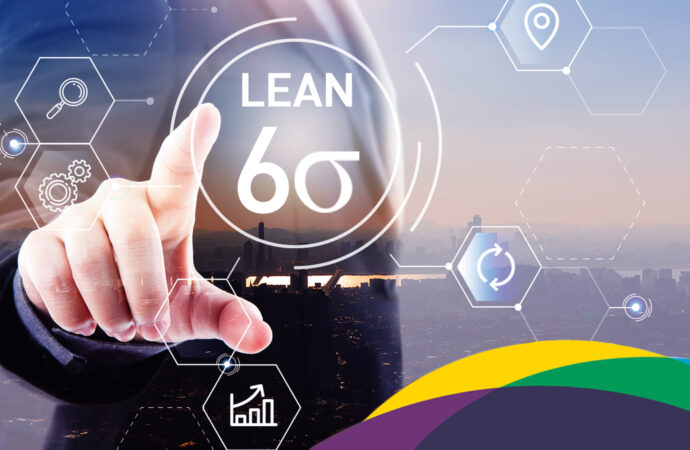Detroit Residents - Learn Lean Six Sigma’s History Here
Contact Us

For the past 13 years, many people have started to think about implementing Lean Six Sigma in their companies or even utilize it for their personal projects as the methodology has proven to be a great way to identify problems and find solutions not only in their business’ operations but in every project as long as you know how to implement LSS structures and principles. However, this will take lots of training, time, and even learning about history to a certain degree. At Lean Six Sigma Curriculum for Detroit High School Students of Michigan, our goal is to offer all the information about the methodology so companies, institutions, and individuals can make a well-informed decision, which is why we start with its history.
Lean Six Sigma, which is a blend of Japanese management principles and methods, can be traced back to the United States. Although some Japanese methodologies influenced it, the final step to its creation involves two methodologies: Lean and Six Sigma, which originated in the USA.
Kaizen is the Japanese influence on the Lean Six Sigma methodology. It encouraged cooperation and commitment to continuous improvement and was the methodology utilized by Japanese companies to get better products and achieve customer satisfaction.
Kaizen is unique because it emphasizes small, positive improvements and reduces the time spent on redundant tasks and processes.
When going back to LSS, the methodology originated from competing with Japanese industries back in the 1980s due to the super products they were obtaining and manufacturing thanks to Kaizen and other process improvement methods.
How Did Six Sigma and Lean Start?
It is important that you understand the differences between Six Sigma and Lean when studying LSS, as it is not entirely correct to say the latter is a mere combination of the other two.
First, because of its structure, principles, and emphasis on customer satisfaction and waste reduction, Lean helped several companies achieve better results during their production phase by focusing on identifying all the waste and eliminating it, if possible, not only reducing it.
Lean is tracked back to Toyota and how it was integrated into the Toyota Production System (TPS). John Krafcik was a former student of the founder of Toyota, and, at the time, he was looking for a name to describe the TPS system.
He wrote down the differences between Toyota’s system and traditional mass production on a whiteboard. He concluded that Toyota’s system needs less of everything to create value and came up with the whole concept of what we know as Lean today.
John ends by describing Lean as a method that focuses on reducing waste and non-value-added activities.
Lean is built upon its own principles and foundations. Understanding the customer is the key to understanding the process’ waste stream and value streams.
Six Sigma, an American-based methodology dating back to the 1980s, is next. Motorola was the original inventor and originator of Six Sigma.
Motorola was unable to compete with foreign companies in its early days. Bob Galvin, the CEO of Motorola, set a goal to achieve tenfold growth in five years, and this was when 6 Sigma came to play an important role.
To make it clear, his plan was focused on global compatibility and participative management, as well as quality improvement and global competition. Motorola adopted Six Sigma quickly as the standard for all business processes since it was proven to increase cycles and produce better results.
Both approaches—Lean and Six Sigma—recognize that change is the only path to success.
Six Sigma is a great addition to the Lean process as it complements the missing parts of focusing on issues and finding solutions for them, which is why LSS was born when the principles of each were combined. The goal was to maximize results by following pre-existing structures and setting the basics.
How Does Lean Six Sigma Work?
LSS has been used in many ways throughout history. It is designed to increase productivity and efficiency and reduce waste.
It is great to understand the principles and solutions of Lean, Six Sigma, and Kaizen. You will see the benefits and drawbacks of LSS in this way.
Lean allows companies and employees to better understand customers and prioritize their needs. They can also focus on the company’s value stream, processes, and value flow to achieve perfection.
Six Sigma is committed to excellence and a system that encourages efficiency and clean operations. Six Sigma is dedicated to innovation and continuous improvement in particular.
Kaizen, a five-part system, emphasizes customer satisfaction and teamwork. It also encourages personal discipline, better morale, and quality circles. It also offers suggestions for improvement.
Thanks to how LSS is formed around the previous two methodologies but, essentially, the first two, Lean Six Sigma can be used by students and businesses alike for the following reasons and needs:
- Learn how to reduce waste.
- Increase efficiency.
- Reduce errors.
- Reduce your risk.
- Time management.
- Lower costs lead to higher revenues and better wages.
- Motivate employees.
- Innovation and leadership are two fundamental concepts that can be established in a company’s or individual’s minds.

Lean Six Sigma Course in Detroit
We at Lean Six Sigma Curriculum Pros of Detroit are available to assist you. We are experts in the history and operation of this methodology. We can teach students at all levels, including high school students and not only college ones, how to integrate LSS into their everyday lives.
Of course, business professionals and all individuals are also welcome, as well as companies or schools that want to establish a program for those in their buildings.
We want you to be a valuable asset to every company and place you choose to work for or to your personal projects. So, make sure to contact us and let us know how we can help you.

